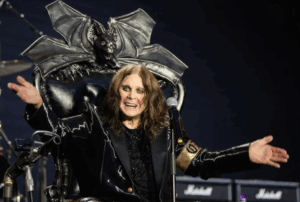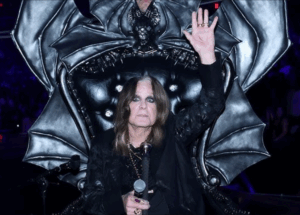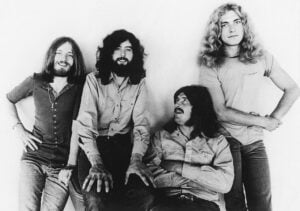3 Iconic 70s Rock Album Art Covers That Should’ve Won a Grammy for Artwork

via AdamBound / YouTube
The Grammy Awards only introduced a formal category honoring album cover design decades after rock’s golden age. Many classic sleeves from the 1970s set high standards for creativity, yet never had a chance at such recognition. The covers below combined bold ideas with striking visuals, helping the music stand out on crowded record‑store shelves. Each remains memorable today and could have taken home a trophy had the award existed at the time.
Jefferson Airplane — Thirty Seconds Over Winterland (1973)
Bruce Steinberg designed Jefferson Airplane’s 1973 live album Thirty Seconds Over Winterland. The cover shows chrome toasters sprouting wings and gliding through a sunset sky above distant clouds. Its playful surrealism matches the band’s psychedelic roots while hinting at the live set’s unpredictable flights.
Steinberg was a San Francisco photographer and art director who often worked with local musicians. His images of Janis Joplin, Jerry Garcia, and the Airplane appeared on posters and magazines throughout the early seventies. The toaster flock became his most famous piece, later inspiring the flying‑toaster screen saver created by After Dark in 1989 software suite.
Alice Cooper — Welcome to My Nightmare (1975)
Alice Cooper’s 1975 solo debut Welcome to My Nightmare features artwork painted by Drew Struzan before he became Hollywood’s leading poster artist. The front shows Cooper in a black tuxedo and top hat stepping through purple drapes, arms spread as if inviting listeners into a twisted stage show tinged with carnival charm.
Struzan mixed airbrush and colored pencil, giving the piece soft edges that contrast with the album’s harder themes. Subtle shading makes Cooper appear almost friendly, until small spider and serpent symbols hint at danger. The image introduced the record’s theatrical concept, later expanded on tour around the world.
Paul McCartney — McCartney (1970)
Released in April 1970, Paul McCartney’s first solo album arrived with a cover photograph taken by his wife Linda. The picture shows a white enamel bowl turned upside‑down on a plain background, its rim surrounded by scattered red cherries. The stark design signaled a break from the colorful imagery of late‑period Beatles releases.
Linda titled the image “Feeding the Birds,” though it was taken in their kitchen. Critics viewed the empty bowl as a symbol of independence and uncertainty as McCartney started fresh. Leaving his name off the front added mystery; some fans thought the back portrait was the cover.















